Hand punch instrument | novice entry hand punch | large decomposition of hand filter cup 1!

Professional coffee knowledge exchange more coffee bean information please follow the coffee workshop (Wechat official account cafe_style)
There is a conversation today:
"recently, I have been slowly accepting hand-made items. I have just come into contact with them. I want to make a set of handcups at home and learn to make coffee when I am free. Why do I find that everyone's utensils are different when I go to each cafe? Why do you use transparent plastic filter cups while others use ceramic ones? is there any particular or difference? " A question from a friend
"Oh, well, the hand filter cup is made of ceramic, copper, resin, single-hole, double-hole, three-hole, multi-rib, few ribs and …... The extracted coffee tastes different, "replied the coffee lover."
"wait, what are you talking about? How can there be so much knowledge in just one filter cup? " A question from a friend.

What about the knowledge of hand-made filter paper? Today, let's talk about novice beginner Chong, how to choose a suitable filter cup.
Before the birth of the hand filter cup, coffee was made directly in the pot. It was not until June 20, 1908, when Melitta Bentz, a housewife from Dresden, Germany, invented the world's first coffee filter cup, that the dilemma of directly boiling coffee residue in the pot was ended. After that, Mrs. Melitta redesigned the Melitta filter cup and became popular with the third wave of coffee. Individual boutique coffee is becoming more and more popular, and hand-brewed coffee is also sought after and loved by coffee lovers, so the design style of filter cup is also emerging in endlessly.
The editor will first talk about the classification of filter cup materials (ceramic, copper and resin) and the number of holes on the filter cup (single pore, double pore, three pore and porous).
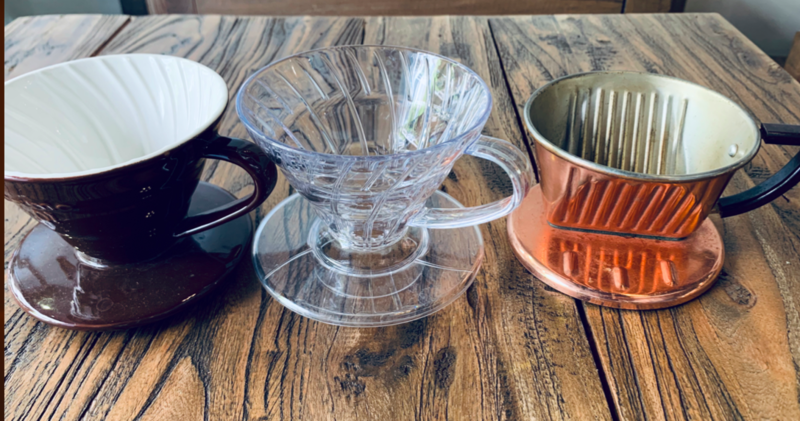
Ceramic: the ceramic filter cup needs to be preheated in advance, because the temperature will decrease when the water touches the ceramic surface, but the advantage of ceramic is good heat preservation. After heating once, the temperature can be maintained for a long time, which is suitable for use in winter. And the ceramic filter cup and the ceramic coffee cup are also very compatible.
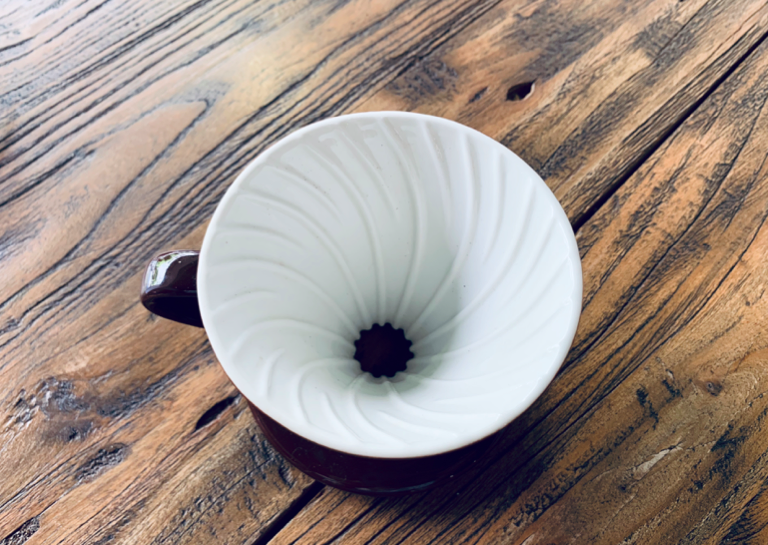
Copper: the copper filter cup is excellent in both thermal conductivity and thermal insulation, but its shortcomings are also very obvious, the price is high and it is not easy to keep, and it is easy to rust if it is not wiped dry. So store it in a dry and cool place after each use. Many coffee makers collect copper filter cups. After all, the charm of copper filter cups is obvious.
Copper filter cups are very textured in appearance, and a considerable number of people are happy to collect copper filter cups, and their thermal insulation and thermal conductivity are excellent. But if you don't take good care of it, the remaining water droplets will oxidize the copper into black spots.
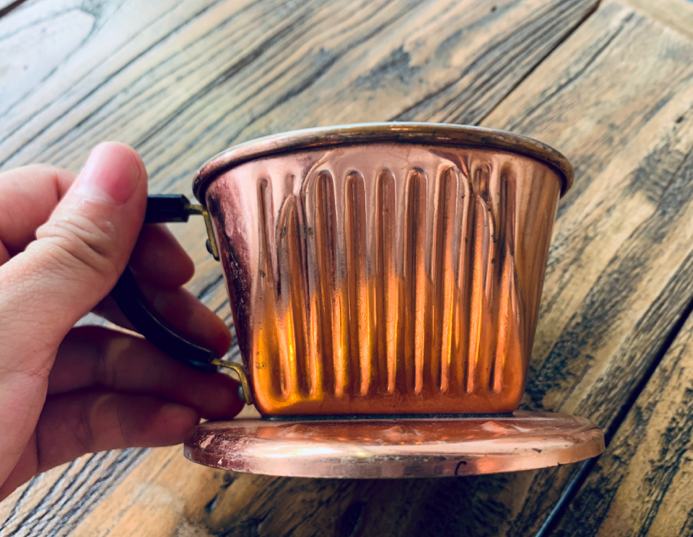
Resin: most of the filter cups of resin are transparent, so it is easy to see the dripping state of coffee liquid during coffee extraction through the filter cup, and it is light and easy to carry. The advantage is economical, cheap, unbreakable, the disadvantage is that the handle is poor, easy to dirty, not timely cleaning, ribs will have traces of coffee residue, but also our daily contact with the most filter cup material.

Classified according to the number of holes (the more holes, the less likely to clog, the faster the flow rate, the higher the technical requirements of hand punching)
Single hole: pioneered by Mrs. Melita, the single-hole filter cup is mainly used for German medium-depth baking.
Double-hole: the function of double-hole filter cup is between single-hole filter cup and three-hole filter cup, which is mainly suitable for light-medium baked beans.
Three-hole: three-hole filter cup is not easy to clog, it is simply a universal filter cup, can be called "a cup in hand, not afraid to go all over the world", suitable for all kinds of roasted coffee.
Porous: filter cup later developed more and more holes, there are four holes, six holes and even eight holes. In general, the more holes, the higher the required technology, and the greater the variables caused by the extraction process.
Hario V60 (invented by HARIO of Japan and the most popular coffee filter cup at present)
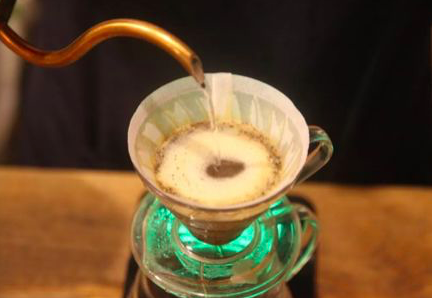
Filter cup design: perfect cone, whirlpool pattern, large round hole in the center.
Extraction characteristics: the design of the filter cup pattern can make the flow rate more uniform, and its powder layer is relatively concentrated in the middle, which is conducive to full extraction. The spiral ribs allow air to escape from all around to maximize the expansion of coffee powder, guide the flow of water and increase the flow rate. However, the water flow in the groove of the filter cup is easy to gather, resulting in over-extraction of some coffee powder and insufficient extraction of some coffee powder; the design of the large round hole in the center can increase the flow rate and make up for the non-uniformity of extraction to a certain extent. Because of its large filter, the speed of water injection and the amount of water injection are the key to determine the speed of leakage and the concentration of coffee, so V60 has relatively high requirements for technical operation. it is suitable for operators who have some experience in hand flushing. (using Hario V60 filter cup requires some cooking skills and stability.)
And then look at the same perfect cone, central round hole of the KONO.
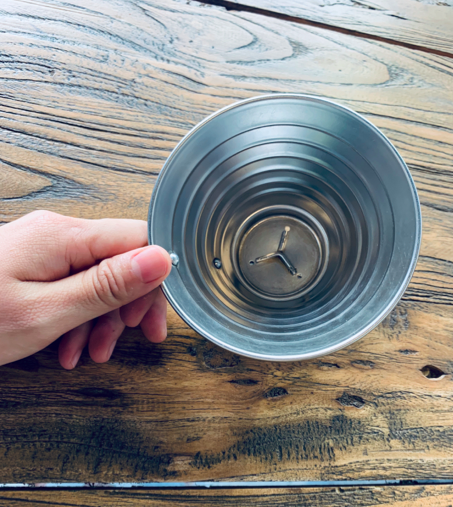
KONO is a famous Japanese company that makes coffee utensils. The original creator of the KONO filter cup is a Japanese named Toshio Kono. The filter cup is named after him.
KONO is not only the favorite professional coffee utensils used by coffee stores and coffee professionals in Japan, but also the product pursued by many lovers who like drip coffee.
A closer look at the ribs of the KONO filter cup shows that the KONO filter cup is a semi-rib design, and its ribs do not extend from the bottom to the top, but stop when they are less than half the height of the filter cup. This height is designed to ensure that in the dripping process, the filter paper can be attached to the wall of the filter cup after absorbing water, and once the exhaust space is limited, the air flow will also be restricted. in this way, the water absorption time of coffee powder particles will be increased to achieve a high extraction rate.
(KONO filter cup is suitable for a wide range and has strong playability.)
Key home diamond filter cup
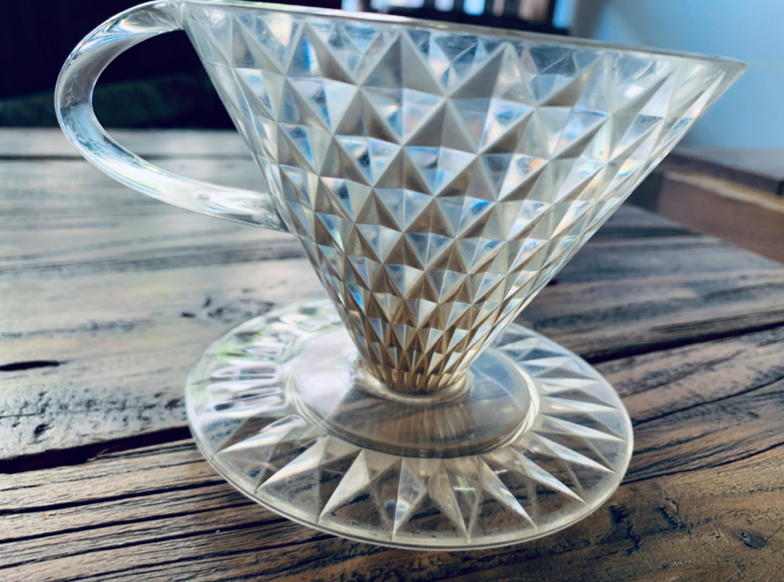
The diamond filter cup is surrounded by a diamond cut, and the center is a relatively large outlet.
The design of the diamond pattern of the filter cup can make the velocity more uniform.
The design of the large round hole in the center of the filter cup can increase the flow rate and make up for the non-uniformity of extraction to some extent.
The filtration speed varies with the void area on the filter cup, the hole is smaller than V60, and the filtration speed is slower than V60.
Bonmac Dripper
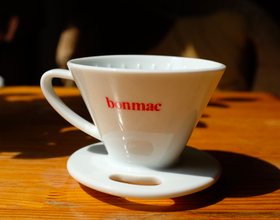
Filter cup design: wedge design, vertical grain, small round hole in the center, bottom observation window.
Extraction features: in a sense, Bonmac Dripper is a perfect filter cup. The perfect match between the size of the filter cup and the small round hole in the center makes the extraction speed neither too fast nor too slow, the flow rate is very stable, and the consistency of coffee is perfect. All you need to adjust is the degree of grinding and the ratio of water to powder.
Bee House
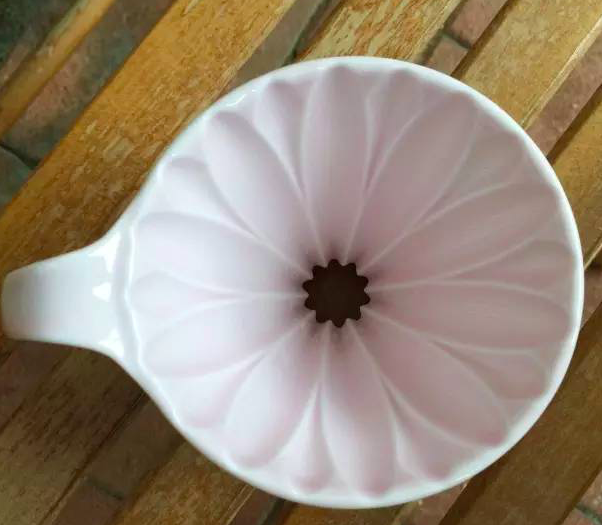
Filter cup design: wedge design, vertical grain, double hole, bottom observation window.
Extraction features: with this filter cup, Andy Sprenger has won 2011 and 2012 world championships successively. "I extracted a lot of cups of coffee with Hario V60 and Kalita Wave, and it worked well. But I used the Beehouse filter cup to get my most satisfied cup of coffee, the most flavor, the cleanest, the most uniform extraction. "
Kalita Wave
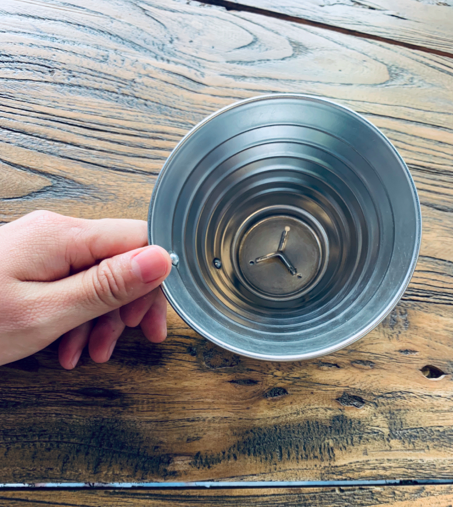
Kalita Wave Dripper is a flat-bottomed filter cup from Japan, also known as cake cup. Kalita has been producing coffee equipment since 1950, and the streamlined style of Kalita Wave is a typical feature of their products.
Filter cup design: flat bottom, three holes.
Extraction characteristics: the bottom of the cake filter cup is flat, in the process of water injection, the pouring water can infiltrate evenly, which can well control the flow rate of the extraction process. The ripple of the filter cup wall is combined with the design of flat bottom and small hole to make the contact time between water and coffee powder reach the ideal state.
Although the aroma of cake cup hand is not as strong as that of cone-shaped filter cup, the overall flavor of beans still has a solid taste and sweetness.
Kalita Wave drip filter cup is suitable for moderate grinding, it is recommended to be a little thicker than when you use V60, this filter cup is relatively slow to enter the water. Although there are three drip holes, they are all very small. Coffee powder grinding too fine will increase the extraction rate, will not make the flavor more prominent, but will be easy to over-extract, drinking the end will be astringent.
Bonavita Next wave

Filter cup design: tapered flat bottom, ring pattern, four holes
Extraction features: annular diversion combined with Next Wave filter paper makes the hot gas discharge and the whole hot water and coffee extraction process more reasonable, four holes will control the extraction flow rate in the best state, higher extraction rate, suitable for shallow baking beans, richer taste layer, thickening cup wall is conducive to brewing time temperature constant temperature, showing a better taste level.
Origami coffee filter cup
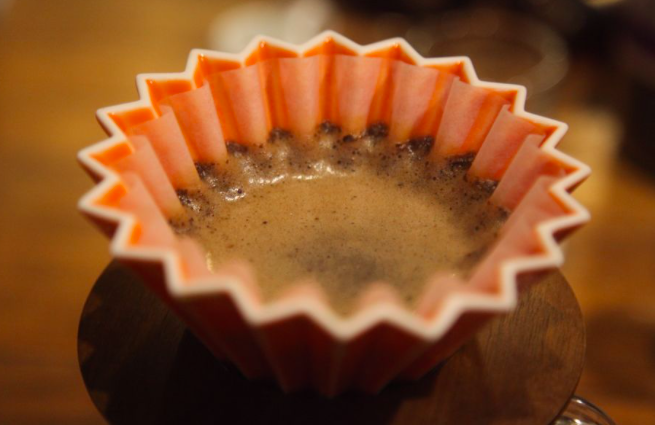
Origami, Japanese for origami, is also called origami filter cup. Made in Japan, designed by Yasuo Suzuki, co-founder of Nagoya Trunk Coffee, each filter cup has a "20 fold" and is hand-fired.
Filter cup design: bowl type flat bottom, vertical grain, single hole
Extraction characteristics: feel between V60 and Wave cup extraction method and flow rate is just right, the bottom of the filter cup is flat and smooth, the water guide groove extends from the top to the bottom, the design concept of origami filter cup is to let the water accumulate at the bottom, and then slowly flow down, the flow rate is smooth extraction coffee is not easy to make coffee over extraction, keep the temperature high, can maintain the overall temperature of coffee, extraction coffee is relatively stable.
Blue bottle filter cup
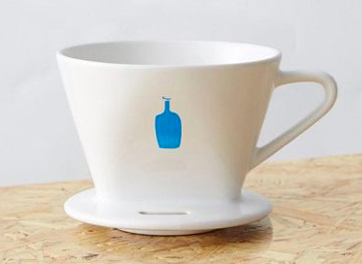
Filter cup design: ladder-shaped flat bottom, vertical grain, single hole
Extraction characteristics: This fan filter cup feels very slow, and the water flows out along the bottom of the filter cup, which is not smooth, but the coffee extraction is very uniform.
American Follicle Pot Chemex
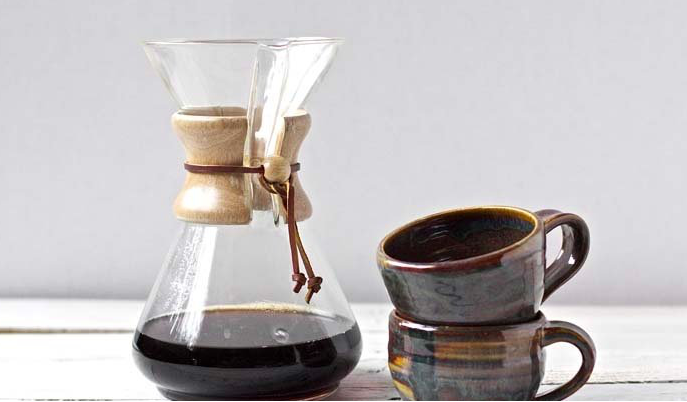
American Follicle Pot is a coffee pot invented in the United States in 1941 by Dr. Peter J. Schlumbohm, born in Germany. Its design and uniqueness have been recognized, not only as one of the "Illinois Institute of Technology's Top 100 Modern Products," but also as a permanent collection of the Smithsonian and the Philadelphia Museum of Art by MoMa, New York.
The uniqueness of the American drip pot is that the coffee pot and filter cup are integrated, not separate. It has a slender waist and is wrapped in wood and leather rope. It is very elegant and elegant. But the secret to pure, flavorful coffee lies elsewhere.
The upper half of the American follicular pot filter cup has an air channel (air channel), which is funnel-shaped. When extracting coffee, it can smoothly supply air, and it can easily remove filter paper after use.
The filter paper of American follicular pot is not funnel-shaped, but flat four-corner or round filter paper. Perhaps because the inventor was a doctor of chemistry. The filter paper used in the American follicular pot is about twice as heavy as ordinary filter paper, but its advantage is that it can drip strong coffee without bitterness.
flannel coffee filter cloth
Flannel, Japanese experts think highly of it, called it "to meet the needs of professionals." Compared with filter paper, filter cloth is superior in "permeability, heat preservation and moisture retention". Flannel is breathable, hot air can be released from any place, there will never be "volcanic bubbles", good insulation, moderate drip rate, even beginners are very easy to use, but flannel filter cloth bag coffee is a time-consuming thing, so the coffee temperature is low, preheating coffee cup can slightly increase the temperature of coffee. Do not re-heat coffee in any form.
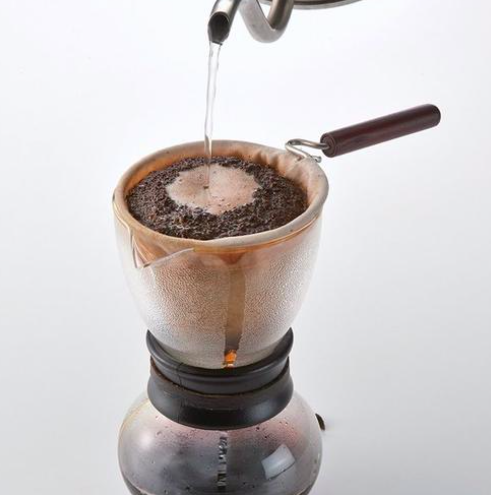
But the biggest disadvantage is that cleaning is very troublesome, each use should be carefully cleaned, and boiled with boiling water, flannelette must not leave any coffee grounds, in order to prevent coffee traces on flannelette from oxidation and odor, after cleaning, it is best to soak the flannelette in a container full of water and store it in the refrigerator.
And generally brew 30-40 times, the need to change the filter cloth, Japanese experts suggest every 20 times after the replacement of flannelette, and this kind of flannelette is sometimes very difficult to find, which is also a troublesome thing.
These factors may be the main reason why flannel filter cup is not very popular in China.
Since we are talking about flannel coffee filter cloth, let's talk about hand filter paper by the way.
Filter paper is mainly divided into bleaching, non-bleaching, the difference between the two lies in the taste of filter paper is heavy or light, unbleached filter paper often has a heavy paper flavor, the common types of filter paper are tapered filter paper (V60 filter cup), fan filter paper (kalita trapezoidal filter cup), cake filter paper (cake cup).
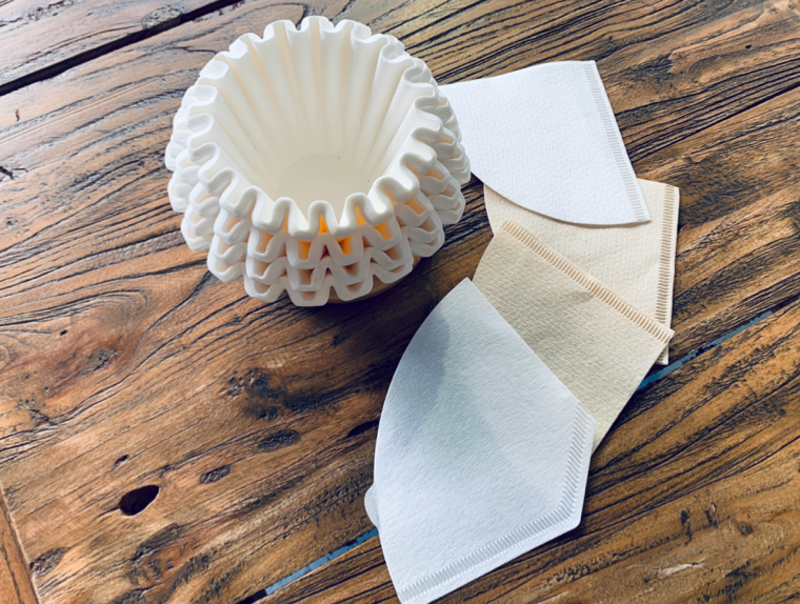
The metal filter screen is very convenient, saving the trouble of using filter paper every time, and saving the cost of buying filter paper, but no matter how fine the filter is, there will always be a small amount of fine powder dripping down with the coffee liquid (anyway, Xiaobian doesn't like to drink coffee droplets with coffee ballast), but the coffee made by the metal filter will retain more coffee oil, so it can be as close to the original flavor of coffee as possible. It is also relatively rich and mellow compared with filter paper in taste.
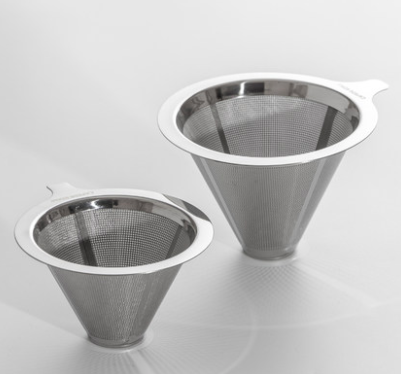
Understand these handmade filter cups ~ are you afraid that you don't know how to select the filter cups? Hey, hey, you can learn, believe me ~ you will fall in love with the taste of the single item.
Important Notice :
前街咖啡 FrontStreet Coffee has moved to new addredd:
FrontStreet Coffee Address: 315,Donghua East Road,GuangZhou
Tel:020 38364473
- Prev

Coffee utensils | how to make coffee with v60 filter cup?
Professional coffee knowledge exchange more coffee bean information Please follow the coffee workshop (Wechat official account cafe_style) V60 caters to many variables in coffee production, mainly in the design of these three points: 1, a 60-degree angle cone: this prolongs the time in which water flows through the coffee powder to the center. 2. A large filter hole: this allows us to control it by changing the flow rate of the water.
- Next

Mocha pot | the origin of mocha pot the development of mocha pot
The product of Italian coffee culture because of the size of these early espresso machines, they are only suitable for commercial use. In an American-style bar, customers stand at the counter and order coffee. In an increasingly industrialized society, this fast service is ideal for workers who need a quick cup of coffee on the road, a tradition that continues to this day. The mocha pot was invented in Italy.
Related
- What is the Philharmonic pressure? How to use Philharmonic pressure to make delicious coffee
- Why does a hand grinder have more fine powder than an electric grinder?
- In addition to the hot mom, what is the difference between the versions of EK43 | ditting and Mahdi ek43?
- What kind of equipment do you need to make coffee by hand? Introduction to novice starter cooking equipment tools
- Espresso needs to be ground how thick and thin scale entry Italian Coffee Machine Bean Grinder investigation and Grinding course
- How much does it cost to open a small private cafe? How much does it cost to learn coffee? How to operate it?
- The difference between the flavor characteristics of hand-brewed coffee and coffee maker is hand-brewed coffee really better than coffee maker? Can I use a coffee machine to make coffee beans by hand?
- The difference between 01 and 02 of hario v60 filter cup what is the difference between 01 and 02 filter cup opening and cooking flavor
- What's the difference between the smart cup and the French kettle? Which is better, the French kettle or the Smart Cup?
- What's the difference between a smart cup and a V60 filter cup? The difference between the taste of smart cup and hand-brewed coffee

